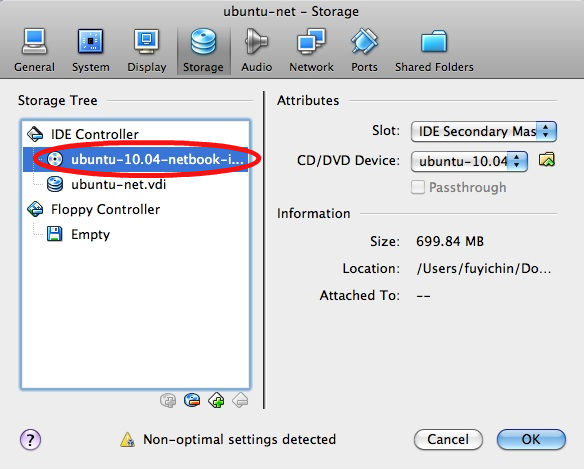4.3 Deploying Images for VMware, VirtualBox, or KVM
Install SUSE* Linux Enterprise Server 12 SP2. This instruction explains how to deploy a pre-configured Clear Linux* OS image as a guest on the VirtualBox hypervisor. Download VirtualBox. VirtualBox* is a type 2 hypervisor from Oracle.
VMware, VirtualBox, and KVM are virtualization technologies to create a guest virtual machine on a host system. All have a graphical user interface to create, import, and start virtual machines.
4.3.1 Using VirtualBox for Appliances
To start an appliance in VirtualBox, proceed as follows:
Create an appliance as explained in Section 2.0, Creating Appliances and select the format VMware / VirtualBox (.vmdk) in the Build tab.
Download and extract your file from Step 1.
Start VirtualBox. If the program is not available, install VirtualBox with YaST.
Click File >Virtual Media Manager and select the .vmdk file extracted in Step 2.
Create a new virtual machine:
Click the New button or use Machine >New.
Insert a name for your virtual machine.
As operating system choose Linux and as version openSUSE or openSUSE (64 bit). The last entry is only available, if you have a 64-bit CPU. If your appliance is built for 64-bit, your host computer and host OS must support this architecture too.
Choose the base memory size.
Click Use existing hard disk and select the filename of your hard disk from Step 2.
Check the parameters that are displayed in the window and finalize with Finish.
If you want to customize the settings of the virtual machine, click Settings.
Execute the virtual machine by clicking the Start button.
4.3.2 Using VMware for Appliances
Due to license issues, we cannot offer special packages for VMware at the moment. Download and install the VMware Player on your system and proceed as follows:

Install the kernel-source package.
Download the VMware Player from https://www.vmware.com/support/product-support/player/. Registration with VMware is required, but it is free.
Run the bundle file:
Accept the EULA (end user license agreement) to continue.
Optionally select Yes or No for product updates and usage statistics.
Click Next and then Install. When VMware Player asks for the root password, it compiles and installs a Kernel module. As this is done completely without any package manager, you cannot use neither YaST nor zypper to check or uninstall it. Use /usr/bin/vmware-uninstall to uninstall.
The VMware images produced by SUSE Studio runs on VMware Player and Workstation. However, the format for VMware Server, ESX, and ESXi is different and hence it needs to be converted into a compatible .vmdk format. Only if you use VMware ESX 4, use the following command on your ESX host:
Additionally, open the file old.vmx and search for the line:
Replace the old filename with the new one:
Free Linux Iso Download Dvd
To start an appliance in VMware Player, proceed as follows:
Iso Image Download For Virtualbox
Create an appliance as explained in Section 2.0, Creating Appliances and select the format VMware / VirtualBox (.vmdk) in the Build tab.
Download the .vmdk file from SUSE Studio.
Unpack the .vmx.tar.gz file:
Start VMware Player by pressing Alt+F2 and entering vmplayer.
Click Open a Virtual Machine.
Select the .vmx file from the archive. You may enter a directory with the name of your appliance first to find this file.
Click Play virtual machine to start your appliance. More information can be found in the Getting Started Guide–VMware Player at http://www.vmware.com/support/pubs/player_pubs.html.
4.3.3 Using KVM for Appliances
Another method is to use a Kernel-based virtualization machine (KVM) with Qemu. Proceed as follows:
Install the qemu package.
Execute the following basic command and replace VMDK_FILE with the respective .vmdk file:
Suse Linux Os Download
For more information on running KVM appliances, see http://www.novell.com/documentation/sles11/book_sles_kvm/data/cha_kvm_intro.html.
